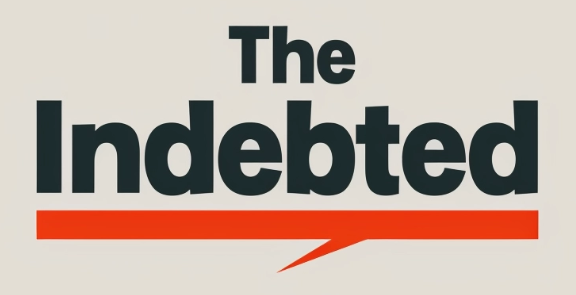If you’re in debt, the thought of a recession can be especially daunting. You might be feeling like you’re already barely making ends meet, and the idea of an economic downturn could be keeping you up at night. But the truth is, there are steps you can take to prepare financially for a recession, even if you’re in debt.
First and foremost, it’s important to acknowledge that a recession is not a guarantee. While it’s always a good idea to be prepared for the worst-case scenario, it’s also important not to panic and make rash financial decisions. Instead, take a step back and assess your current financial situation. Look at your income, expenses, and debt, and create a budget that works for you. This will help you get a clearer picture of your financial health and identify areas where you can cut back to save money.
Next, focus on building up your financial resilience. This means having a solid emergency fund in place, paying down high-interest debt, and looking for ways to increase your income. While it might seem counterintuitive to focus on saving money when you’re in debt, having an emergency fund can be a lifesaver in the event of a recession. Aim to have at least three to six months’ worth of living expenses saved up in a separate account. This will give you a cushion to fall back on if you lose your job or experience a significant drop in income.
Understanding Recession and Its Impact on Personal Finances
As a person in debt, it is important to understand the impact of a recession on personal finances. A recession is a period of economic decline that is marked by a decrease in gross domestic product (GDP), an increase in unemployment rate, and a general slowdown in economic growth. It is often accompanied by a decrease in consumer spending, which can lead to a decrease in business profits and job losses.
The Economic Indicators of a Recession
There are several economic indicators that can signal a recession. One of the most important indicators is the GDP, which measures the total value of goods and services produced in a country. When the GDP declines for two consecutive quarters, it is a sign of a recession. Another important indicator is the unemployment rate, which measures the percentage of people who are unemployed and looking for work. During a recession, the unemployment rate typically increases.
How Recessions Affect Individual Debt and Savings
Recessions can have a significant impact on individual debt and savings. During a recession, many people may lose their jobs or experience a decrease in income, which can make it difficult to pay off debt. As a result, many people may have to rely on credit cards or loans to make ends meet, which can lead to an increase in debt.
At the same time, recessions can also lead to a decrease in interest rates, which can be beneficial for those with debt. Lower interest rates can make it easier to pay off debt and can also make it more affordable to take out loans.
In terms of savings, recessions can make it difficult to save money. With a decrease in income and an increase in expenses, many people may find it challenging to set aside money for emergencies or future expenses. However, it is important to continue to save money during a recession, even if it is only a small amount each month. Having an emergency fund can provide a financial safety net during difficult times.
Overall, it is important to understand the impact of a recession on personal finances and to take steps to prepare for a potential downturn. This includes paying off debt, saving money, and being prepared for a potential decrease in income. By taking these steps, individuals can help protect themselves financially during a recession.
Assessing and Restructuring Your Budget
As someone in debt, it’s essential to assess and restructure your budget to prepare for a recession. Here are two crucial steps to take:
Identifying Essential Versus Non-Essential Expenses
The first step in restructuring your budget is to identify essential versus non-essential expenses. Essential expenses are those that you must pay to maintain your basic needs, such as housing, utilities, and food. Non-essential expenses are those that you can cut back on, such as entertainment, dining out, and shopping.
To identify your essential expenses, make a list of all your monthly bills and expenses. Once you have a list, categorize each expense as essential or non-essential. This process will help you determine where you can cut back to save money.
Creating a Recession-Proof Budgeting Plan
The next step is to create a recession-proof budgeting plan. This plan should focus on reducing your expenses and increasing your savings. Here are some tips to help you create a recession-proof budgeting plan:
- Reduce your expenses: After identifying your essential expenses, look for ways to reduce your non-essential expenses. For example, you can cut back on dining out, cancel subscription services, and shop for deals on groceries and household items.
- Increase your savings: To prepare for a recession, it’s essential to increase your savings. Start by setting aside a portion of your income each month to build an emergency fund. Ideally, you should aim to save at least three to six months’ worth of expenses.
- Track your spending: To ensure that you’re sticking to your budget, track your spending regularly. Use a budgeting app or spreadsheet to keep track of your expenses and income.
- Consider debt consolidation: If you have multiple debts, consider consolidating them into one loan. This can help you save money on interest and make it easier to manage your debt payments.
By assessing and restructuring your budget, you can prepare financially for a recession, even if you’re in debt. With a recession-proof budgeting plan in place, you’ll have the financial security to weather any economic storm that comes your way.
Strategies for Managing Debt Before and During a Recession
As someone who is in debt, it’s important to be proactive in managing your debt before and during a recession. Here are some strategies to help you prepare financially:
Prioritizing High-Interest Debt
When it comes to managing debt, it’s important to prioritize high-interest debt first. This includes credit cards and other loans with high-interest rates. By paying off these debts first, you can save money on interest charges and reduce your overall debt load.
To prioritize your debt, make a list of all your debts and their interest rates. Then, focus on paying off the debt with the highest interest rate first while making minimum payments on your other debts. Once you’ve paid off the highest interest debt, move on to the next highest interest rate debt and continue until all your debts are paid off.
Debt Consolidation and Refinancing Options
If you have multiple debts with high-interest rates, you may want to consider debt consolidation or refinancing. Debt consolidation involves taking out a loan to pay off all your existing debts, leaving you with just one payment to make each month. Refinancing involves taking out a new loan to pay off an existing loan, often with a lower interest rate.
Both options can help you save money on interest charges and simplify your debt repayment. However, it’s important to do your research and compare rates and fees before choosing a consolidation or refinancing option.
The Snowball and Avalanche Methods
Two popular debt repayment strategies are the snowball and avalanche methods. The snowball method involves paying off your smallest debts first while making minimum payments on your larger debts. Once the smallest debt is paid off, you move on to the next smallest debt and so on. The idea is that the small wins will motivate you to keep going.
The avalanche method, on the other hand, involves paying off your debts in order of highest to lowest interest rate. You make minimum payments on all your debts except for the one with the highest interest rate, which you focus on paying off first. Once that debt is paid off, you move on to the next highest interest rate debt.
Both methods can be effective, but it’s important to choose the one that works best for your financial situation.
By prioritizing high-interest debt, exploring debt consolidation and refinancing options, and using the snowball or avalanche method, you can better manage your debt before and during a recession. Remember, it’s important to be proactive and take control of your finances to prepare for any economic downturns.
Building an Emergency Fund and Saving for the Future
As we prepare financially for a recession, building an emergency fund and saving for the future are crucial steps to take. In this section, I will discuss how much to save in your emergency fund and choosing the right savings and investment vehicles.
How Much to Save in Your Emergency Fund
An emergency fund is a crucial component of any financial plan, especially during a recession. The general rule of thumb is to save at least three to six months’ worth of living expenses in your emergency fund. However, if you are in debt, it may be wise to aim for a higher amount, such as six to twelve months’ worth of living expenses. This will provide a safety net in case of a job loss or other unexpected financial hardship.
To calculate your emergency fund goal, start by adding up your monthly expenses, including rent/mortgage, utilities, groceries, transportation, and any other necessary expenses. Multiply this amount by the number of months you want to save for. This will give you a rough estimate of how much you need to save.
Choosing the Right Savings and Investment Vehicles
Once you have determined your emergency fund goal, you need to choose the right savings and investment vehicles to achieve it. A high-yield savings account is a good option for your emergency fund because it offers a higher interest rate than a traditional savings account. This will help your emergency fund grow over time.
In addition to your emergency fund, you should also consider investing for the future. A retirement account, such as a 401(k) or IRA, is a great way to save for your future while taking advantage of tax benefits. If you have debt, it may be wise to focus on paying that off first before investing heavily in retirement accounts.
When choosing your investment strategy, it’s important to consider your risk tolerance and investment goals. If you’re not comfortable with risk, you may want to stick with a conservative investment strategy, such as investing in index funds. If you’re comfortable with more risk, you may want to consider individual stocks or mutual funds.
In conclusion, building an emergency fund and saving for the future are essential steps to prepare financially for a recession when you’re in debt. By following these guidelines, you can create a solid financial foundation that will help you weather any financial storm.
Supplementing Income Through Diverse Revenue Streams
When preparing financially for a recession, supplementing your income through diverse revenue streams can be a smart strategy. By creating additional sources of income, you can increase your financial stability and reduce the impact of job loss or unemployment. Here are some ways to explore diverse revenue streams:
Exploring Side Hustles and Passive Income Opportunities
One way to supplement your income is by exploring side hustles and passive income opportunities. A side hustle is a job or business that you do in addition to your primary source of income. Passive income, on the other hand, is money that you earn without actively working for it. Here are some examples of side hustles and passive income opportunities:
-
Freelance work: If you have a skill or talent, such as writing, graphic design, or coding, you can offer your services as a freelancer.
-
Rent out your property: If you have a spare room or property, you can rent it out on platforms like Airbnb.
-
Sell products online: You can sell products on platforms like Etsy or Amazon.
-
Dividend investing: You can invest in dividend-paying stocks or mutual funds.
Enhancing Job Security and Networking
Another way to supplement your income is by enhancing your job security and networking. By improving your resume, expanding your professional network, and gaining new skills, you can increase your chances of finding new job opportunities and earning more money. Here are some ways to enhance your job security and networking:
-
Improve your resume: Keep your resume up-to-date and tailor it to the specific job you are applying for.
-
Expand your professional network: Attend industry events, join professional organizations, and connect with people on LinkedIn.
-
Gain new skills: Take courses or workshops to improve your skills and stay up-to-date with industry trends.
-
Increase job security: Ask for feedback from your boss, take on additional responsibilities, and build good relationships with colleagues.
In conclusion, supplementing your income through diverse revenue streams can help you prepare financially for a recession. By exploring side hustles and passive income opportunities, and enhancing your job security and networking, you can create additional sources of income and increase your financial stability.





